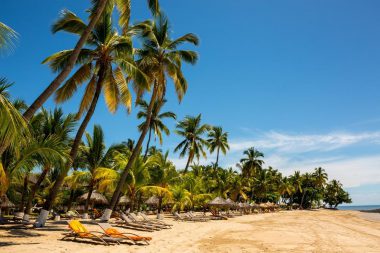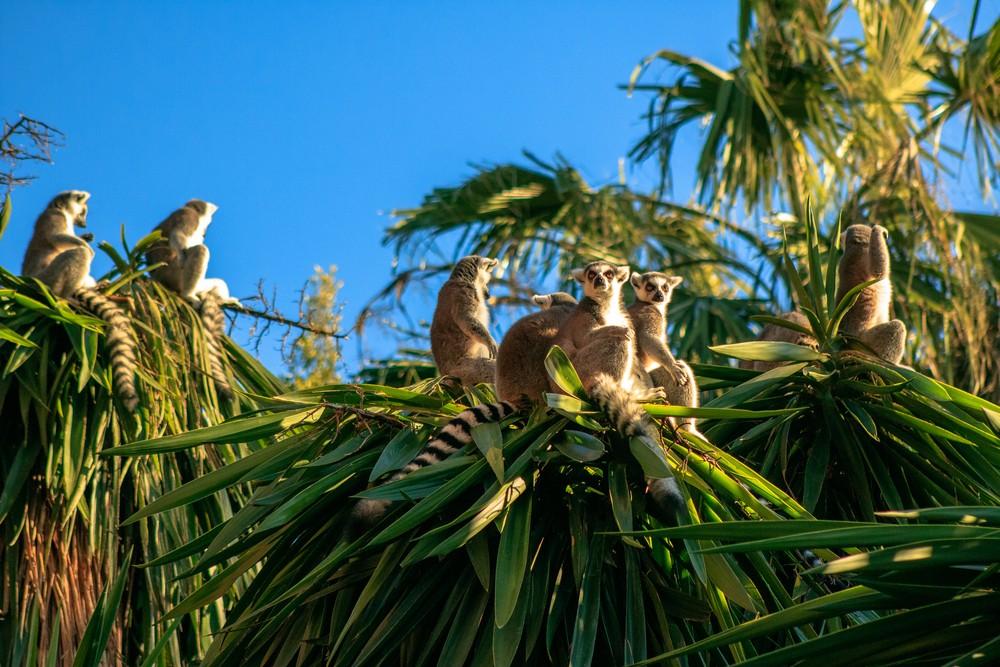This is a land of smiles, lobsters and lemurs. Madagascar is a country beyond Africa, and it is so very different from many regions of the Black Continent. On this large island, holidaymakers can expect a very wide range of impressions and encounters with people who have allied themselves with nature. Knowing full well that this idyll is their greatest treasure.
Madagascar invites you to extensive round trips, because the island is as big as Belgium and France combined. Imposing mountains, green rice terraces, a steppe in the highlands and tropical forests. All this alternates permanently before the eyes of the viewer. The coastline of Madagascar measures 4,800 kilometers, and the beaches are almost always deserted and paradises for divers and snorkelers.

The deep south of Madagascar begins in a semi-desert not far from Tuléar. Although it rarely rains here, visitors feel that this region is full of life. After all, aloe, euphorbia and didiera thrive here. The farmers in this remote area herd their goats and hope for the blessing from above, which rarely comes in the form of wet cooling. A tasty goat’s cheese is produced here, and the people of this region profess Christianity – but also the creator god Zanahary. They seek advice from their deceased and regard them as mediators between heaven and earth. Superstition has become entrenched in the consciousness of many inhabitants of the Malagasy south.
There are also beaches in the south, but if you are looking for a postcard motif, you should look around in the tropical north of the island. For example, at Ramena, at the Baie de Sakalava or at Mer d’Emeraud east of Diego Suarez. The divers find a shipwreck on Nosy Be at a depth of twenty meters, where schools of colorful fish have settled and the coral reefs are fairly unscathed. Manta rays and whale sharks can be found there, as well as more than thirty different species of dolphins and whales. They find an excellent habitat in the Mozambique Channel of the Indian Ocean.

Most holidaymakers only know the shy lemurs from the local zoos, but in Madagascar you can observe them in the wild. It is only strange that the Romans, of all people, gave this name to the semi-apes, although the animals were never native to Italy . But the Romans used lemur in their mythology to refer to the spirit of a dead person, which probably led to the people of Madagascar recognizing their reincarnated ancestors in the cute lemurs. In the tropical forests and the deep gorges of the fourth largest island in the world, the lemurs feed on insects and leaves.
Flora and fauna present themselves in Madagascar in their most abundant form, and on the beaches of the mostly uninhabited smaller islands, even the rare red-tailed tropicbirds breed. Thanks to the large number of endemic creatures, Madagascar is something like a museum of creation and a Garden of Eden. The cornucopia of nature also opens up in the Anjajary Nature Reserve, where the bungalows by the sea meet all the requirements of eco-tourism. They are oases of peace in a land of smiles.
Often, the rivers are the fastest way to get around in the jungle of the island. If you entrust yourself to the boats of locals on the Pangalanes Canal, you will pass picturesque villages every now and then, whose houses crouch on the shore and where the women do the laundry and whose children play in a flourishing water world. Madagascar fulfills all the wishes of holidaymakers for a stay in an exotic environment. A dinner by the light of the candles, the lapping of the waves and an indescribable starry sky at night. Madagascar is a poor and yet so rich country.
Travel information Madagascar
| Capital | Antananarivo |
|---|---|
| Form of government | Republic Semi-presidential system of government |
| Currency | Ariary (MGA) |
| Area | approx. 587,295 km² |
| Population | approx. 24.900.00 |
| Languages | Malagasy and French |
| Electricity grid | 127/220 volts, 50 Hz |
| Area code | +261 |
| Time zone | UTC+3 |


